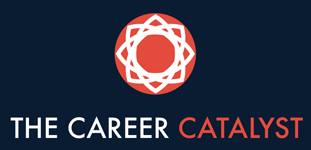
I’m sure you’ve hundreds, or perhaps thousands, of miracle weight loss remedies—No diet or exercise! Expert-approved! Endorsed by [famous person]!—and moved on with your life because you are not that gullible. Right?
Unfortunately, the same is true of job-searching. There’s no dearth of people promising astounding results if you just do these three/five/seven things, and they’re so loud and so confident that it’s easy to get sucked in.
But the process of finding a job simply doesn’t come with miracle cures.
It takes perseverance, networking (which, remember, is a long game and unlikely to yield immediate results), wordsmithing, and a measure of luck. The good news is that there are things we can do to put you firmly in luck’s path. Some call this planned happenstance.
If you’re in a job-search, you know how frustrating it is—often with an edge of terrifying because those bills will only wait so long. How can you make planned happenstance… happen? Much like everything else worth doing, it’s a series of things. First, really customize those application materials. Generative AI can help you get started, but as I’ve said before, you absolutely must edit after you’ve turned out an AI resume. First of all, the robots are alarmingly prone to what’s called AI hallucinations: those incorrect or misleading results that AI models generate. Second, no platform yet produces a high-quality document. What you will get is a great starting place, but mostly in language you wouldn’t use, and language that will bore recruiters and hiring managers to tears. Your personality needs to shine through in your applications, and the language you use should be unique to you.
Second, spend some time networking. Yes, I know I’ve just said networking is a long game that won’t yield immediate results, but you should do it anyway. The people you connect with—really connect with—when you’re networking are going to be your biggest boosters in future job searches. They may even be able to give you info about things that are a bit quicker, but you need to be specific (what role you’re seeking) and you need to know that the relationship is solid. Think of it this way: how helpful would you be willing to be to someone you once stood in line with at the coffee shop? Now imagine instead that the person who needs help is someone who has treated you to coffee, checked in with you periodically, and sent you birthday wishes. Chances are good that Person B is someone you’re pretty willing to go to bat for, but Person A would, at best, get some info you’ve seen about an upcoming job fair.
And don’t forget your LinkedIn profile! This is where the wordsmithing comes in. You want to make sure you’re visible to people who make hiring decisions, so be sure you’re capturing the language of the roles you’re seeking. Make your goals and accomplishments clear and not buzzwordy or cliched. Look at the profiles of people in similar roles and see what ideas you can generate that way. (And connect with them and any professional organizations they belong to that are relevant to you!)
And, yes, the process is a bit of a numbers game—not purely, but the number of things you find to apply for will play a role. If you put all your career eggs in one employer basket, for example, you’re banking on them resonating with what you say and feeling as excited about you as you do about them. But that may not be the case, so be picky but cast your net wide. Those jobs aren’t going to miraculously appear for you any more than eating a gummy bear is going to make you model-thin. These things take work! But you can do it.



